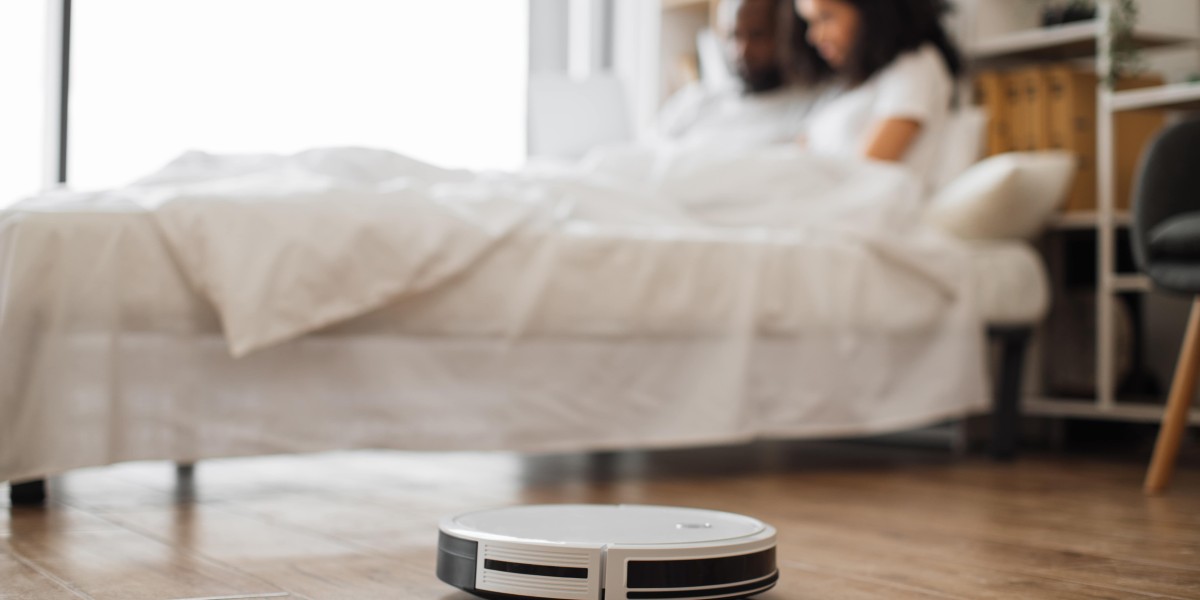The Rise of the Robots: A Comprehensive Guide to Robotic Hoovers
In today's fast-paced world, performance and benefit are extremely treasured. We look for options that streamline our daily regimens and maximize our precious time. One such development that has actually progressively acquired popularity in homes throughout the globe is the robotic hoover, typically adoringly referred to as a "robovac." These ingenious gadgets are no longer futuristic novelties however rather practical tools changing the method we approach home cleaning. This short article looks into the world of robotic hoovers, exploring their performance, benefits, essential features to consider, and what makes them a worthwhile addition to the modern home.
Gone are the days of lugging heavy vacuum and manually browsing every corner of your home. Robotic hoovers use an automated cleaning service, taking the task of vacuuming off your hands. But how precisely do these compact devices work, and are they really as reliable as traditional methods? Let's decipher the complexities of robotic hoovers and discover why they are becoming an important part of modern-day living.

Understanding the Technology Behind Robotic Hoovers
At their core, robotic hoovers are sophisticated pieces of innovation created to autonomously navigate and clean your floors. They accomplish this through a mix of sensors, algorithms, and cleaning mechanisms. While specific technologies differ in between designs and brand names, some common components underpin their operation:
Navigation Systems: Robotic hoovers employ numerous navigation systems to map and traverse your home. Older designs frequently use a bump-and-go approach, counting on physical contact with challenges to change instructions. More innovative designs use advanced technologies like:
- LiDAR (Light Detection and Ranging): This laser-based system produces a comprehensive map of the environment, enabling effective path planning and systematic cleaning patterns.
- Visual SLAM (Simultaneous Localization and Mapping): Using cams, these robotics develop a visual map of your home, enabling them to comprehend their place and browse complex layouts.
- Infrared Sensors: These sensing units identify challenges and edges, preventing the robot vacuum cleaner with mop from dropping stairs or running into furnishings too powerfully.
Cleaning Mechanisms: Robotic hoovers are equipped with different cleaning tools to successfully pick up dust, particles, and pet hair. These normally include:
- Rotating Brushes: These brushes, frequently located beneath the best robot vacuums uk, loosen up dirt and sweep it into the suction course. Some designs have side brushes to reach edges and corners better.
- Suction Power: A motor creates suction to lift particles into the dustbin. Suction power differs considerably between designs and is a crucial element in cleaning efficiency, particularly on carpets.
- Filters: Robotic hoovers frequently integrate filters, such as HEPA filters, to trap fine dust particles and allergens, contributing to enhanced air quality in your home.
Smart Features: Modern robotic hoovers are increasingly incorporated with smart innovation, improving their performance and user experience. These features can include:
- Smartphone App Control: Allows you to begin, stop, schedule, and screen cleaning cycles from another location.
- Voice Control Integration: Compatibility with voice assistants like Alexa or Google Assistant for hands-free operation.
- Zoned Cleaning and No-Go Zones: Ability to define particular areas for cleaning or to omit particular zones from the robot's path.
- Multi-Floor Mapping: Advanced robotics can save maps of multiple floors in your home, adapting their cleaning method to each level.
- Automatic Docking and Charging: Robotic hoovers automatically return to their charging dock when the battery is low, ensuring they are always ready for the next cleaning cycle.
The Benefits of Embracing Robotic Hoover Technology
The appeal of robotic hoovers extends beyond their technological novelty. They provide concrete advantages that simplify home chores and enhance every day life:
- Time Savings and Convenience: The most considerable advantage is the time released up from manual vacuuming. Robotic hoovers can clean your floors while you are at work, running errands, or merely relaxing, allowing you to focus on more enjoyable activities.
- Consistent Cleanliness: By scheduling routine cleaning cycles, robotic hoovers keep a consistent level of tidiness, preventing dust and particles buildup and keeping your home looking and feeling fresher.
- Reduced Effort and Physical Strain: For individuals with mobility concerns, back issues, or merely those who dislike the physical exertion of vacuuming, robotic hoovers offer a welcome option. They remove the requirement to press and pull heavy equipment, making cleaning less physically requiring.
- Pet Hair Management: Robotic hoovers are particularly adept at taking on pet hair, a persistent obstacle in lots of families. Routine robotic cleaning can considerably decrease pet hair build-up on floorings and carpets, adding to a cleaner and much healthier environment for allergic reaction victims.
- Quiet Operation (in some models): Many modern-day robotic hoovers; http://142.93.151.79/robot-cleaner-uk3284/8133www.robotvacuummops.uk/issues/6, are designed to run at relatively low noise levels compared to standard vacuum, permitting them to clean up without interrupting household activities or discussions.
- Improved Air Quality (with HEPA filters): Models equipped with HEPA filters can trap fine dust particles, irritants, and pet dander, possibly improving indoor air quality, specifically beneficial for people with allergic reactions or breathing sensitivities.
Secret Features to Consider When Choosing a Robotic Hoover
Choosing the right robotic hoover involves considering your specific needs and home environment. Here are some crucial functions to assess before purchasing:
- Navigation Technology: For bigger or more complex homes, advanced navigation systems like LiDAR or visual SLAM are highly suggested for effective and methodical cleaning. Bump-and-go navigation is generally better suited for smaller, easier areas.
- Suction Power: Consider the kind of flooring in your house. Houses with predominantly difficult floors might need less suction power, while homes with carpets, specifically thick carpets, will gain from models with higher suction abilities.
- Battery Life and Coverage Area: Ensure the battery life is enough to clean up the preferred location on a single charge. Producers typically specify the approximate cleaning area protection per charge cycle. For bigger homes, look for robotics with longer battery life or those capable of automatic charging and resuming cleaning.
- Dustbin Capacity: A larger dustbin capacity lowers the frequency of emptying. Consider your home size and the level of dust and debris normally gathered. Some advanced models now provide self-emptying dustbins, even more reducing manual intervention.
- Smart Features and App Control: Evaluate the level of smart features that line up with your requirements. Smartphone app control, voice control, zoned cleaning, and no-go zones can considerably boost the user experience and modification.
- Brush Types and Design: Consider the brush types and style, specifically if you have family pets or are worried about fragile floor covering. Rubber brushes are frequently chosen for pet hair, while softer brushes might be much better fit for fragile difficult floors.
- Height Profile: If you have low-profile furnishings, check the height of the robotic hoover to guarantee it can browse under sofas, beds, and other furniture.
- Cost and Budget: Robotic hoovers range in rate from affordable alternatives to high-end models with sophisticated features. Determine your budget plan and prioritize features that are most important for your needs.
Types of Robotic Hoovers: Beyond Basic Vacuuming
The robotic hoover market has broadened beyond basic vacuuming performances, using specialized models to accommodate varied cleaning requirements:
- Vacuuming Robots: These are the most common type, focusing entirely on dry vacuuming. They are reliable at selecting up dust, particles, and pet hair from numerous floor types.
- Vacuuming and Mopping Robots (2-in-1): These versatile models combine vacuuming and mopping performances. They generally vacuum first and after that mop using a wet pad or water tank. While practical, their mopping abilities are usually lighter and much better suited for maintenance cleaning instead of deep cleaning.
- Robotic Mops: Specifically developed for mopping difficult floorings, these robots focus exclusively on wet cleaning and work at eliminating spots and spills from tile, laminate, and wood floorings.
- Specialized Robots (e.g., Window Cleaning Robots, Pool Cleaning Robots): While less typical, specific robotic cleaning options are likewise emerging for specific jobs such as window cleaning and pool cleaning.
Keeping Your Robotic Hoover for Longevity
To guarantee your robotic hoover continues to carry out optimally and lasts for several years to come, regular upkeep is essential:
- Emptying the Dustbin: Empty the dustbin frequently, preferably after each cleaning cycle, to keep suction efficiency and prevent clogging.
- Cleaning Brushes: Remove and clean the brushes frequently to get rid of tangled hair, fibers, and debris accumulation. This will guarantee effective dirt pickup.
- Cleaning Filters: Clean or change filters according to the maker's suggestions. Clogged filters minimize suction power and can affect air quality.
- Cleaning Sensors: Keep sensing units clean and complimentary from dust and debris to make sure accurate navigation and challenge detection.
- Checking Wheels and Rollers: Inspect wheels and rollers occasionally to get rid of any twisted hair or obstructions that might hinder movement.
- Replacing Parts as Needed: Over time, particular parts like brushes and filters will require replacement. Follow the maker's standards for replacement schedules.
Benefits and drawbacks of Owning a Robotic Hoover
Like any technology, robotic hoovers have their advantages and disadvantages. Comprehending these can assist you make an informed decision:
Pros:
- Convenience and Time Savings
- Consistent Cleaning
- Reduced Physical Effort
- Efficient Pet Hair Management
- Smart Features and Automation
- Improved Air Quality (with HEPA filters)
Cons:
- Higher Initial Cost Compared to Traditional Vacuums
- Might Not Replace Deep Cleaning Entirely (for some models)
- Requires Regular Maintenance (dustbin emptying, brush cleaning)
- Navigation Challenges in Cluttered Environments (for standard designs)
- Battery Life Limitations (for bigger homes with some models)
- Potential for Getting Stuck or Requiring Intervention
The Future of Robotic Hoovers
The technology behind robotic hoovers is continuously developing, and we can expect further advancements in the future. Patterns to look out for include:
- Enhanced Navigation and Mapping: Even more advanced navigation systems, possibly integrating AI and artificial intelligence, will lead to smarter and more effective cleaning patterns.
- Enhanced Obstacle Avoidance and Object Recognition: Robots will progress at acknowledging and avoiding obstacles, consisting of smaller sized items and pet waste.
- Increased Suction Power and Cleaning Performance: Manufacturers will continue to enhance suction power and cleaning efficiency, bridging the space with conventional vacuum.
- Self-Emptying and Self-Cleaning Features: More designs will likely feature self-emptying dustbins and even self-cleaning brushes, even more decreasing user intervention.
- Integration with Smart Home Ecosystems: Seamless integration with smart home platforms and wider home automation systems will end up being a lot more common.
- Lower Prices and Increased Accessibility: As innovation matures and production scales up, robotic hoovers are likely to end up being more inexpensive and available to a broader series of consumers.
Conclusion: Embracing the Automated Cleaning Revolution
best robotic vacuum cleaners hoovers have transitioned from a futuristic idea to a useful and progressively necessary household appliance. They use a compelling option for hectic people and households seeking to streamline their cleaning regimens and keep consistently tidy homes. While they might not totally change standard vacuum cleaners for all deep cleaning jobs, they excel at day-to-day maintenance, pet hair management, and offering a hassle-free, automated cleaning option.
By thoroughly considering your needs, home environment, and the essential functions gone over, you can select a robotic hoover that flawlessly integrates into your lifestyle and changes the method you approach household cleaning. Accept the rise of the robotics and experience the liberty and benefit of automated floor cleaning.
Regularly Asked Questions (FAQs) about Robotic Hoovers:
Q: Are robotic hoovers as powerful as traditional vacuum?A: While robotic hoovers have actually improved considerably in suction power, they generally might not match the deep cleaning power of high-end standard vacuums, especially for really thick carpets. Nevertheless, for day-to-day upkeep and basic cleaning on hard floors and a lot of carpets, they are extremely effective.
Q: How long do robotic hoovers generally last?A: The life expectancy of a robotic hoover can differ depending on the brand name, model, and usage frequency. Usually, with correct maintenance, a great quality robotic hoover can last for 3-5 years or perhaps longer.
Q: Can robotic hoovers clean pet hair efficiently?A: Yes, lots of robotic hoovers are specifically developed to deal with pet hair. Look for models with rubber brushes and strong suction, which are especially reliable at getting pet hair from numerous surface areas.
Q: Do robotic hoovers deal with carpets?A: Yes, many robotic hoovers are developed to deal with carpets, although performance can vary depending upon the carpet type and robot design. Models with strong suction and proper brush types will carry out better on carpets, especially thicker carpets.
Q: Are robotic hoovers challenging to maintain?A: Robotic hoovers need standard maintenance, such as emptying the dustbin, cleaning brushes, and cleaning or changing filters. Nevertheless, this maintenance is usually simple and less requiring than keeping standard vacuum cleaners.
Q: How much do robotic hoovers cost?A: The price of robotic hoovers varies widely, ranging from under ₤ 200 for fundamental designs to over ₤ 1000 for high-end designs with innovative features. The cost usually shows the functions, innovation, and cleaning efficiency offered.
Q: Can robotic hoovers damage furnishings or walls?A: Modern robotic hoovers are developed to minimize bumping and collisions with furnishings and walls utilizing sensing units. While minor bumps may take place, they are generally gentle and unlikely to cause damage. Advanced models with LiDAR or visual SLAM are even better at navigating around obstacles exactly.
Q: What happens if my robotic hoover gets stuck?A: While robotic hoovers are designed to browse autonomously, they can sometimes get stuck, particularly in chaotic environments or on thick rugs with tassels. Many models have features to discover getting stuck and will stop cleaning and send out a notice or sound an alarm.
Q: Can I arrange my robotic hoover to clean up when I'm not home?A: Yes, scheduling is an essential feature of most robotic hoovers. You can generally establish cleaning schedules through a mobile phone app or straight on the robot, permitting it to clean up while you are far from home.








